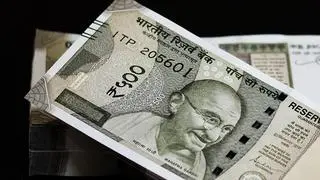As India’s water crisis gets visibly worse with every passing summer, it is clear that the bureaucracy and policymakers are not working to find immediate and long-term solutions. This time, the apathy seems to have worsened due to the ongoing elections. In Maharashtra and Kerala, for instance, the administrations have taken refuge in the ‘model code of conduct’ for not taking steps to arrange for drinking water or fodder camps. Despite the fact that Maharashtra, Gujarat, Karnataka, Odisha, Andhra Pradesh and Rajasthan have declared many of their districts as drought hit, the requisite steps such as providing drinking water and work under MGNREGA have yet to pick up. It hasn’t helped that the Centre altered the drought manual in 2016, making the parameters for declaring drought more stringent. This has reduced the scope for Central assistance. Surprisingly, the NITI Aayog, which brought out its ‘Composite Water Management Index’ last June and flagged the calamitous situation with respect to water, has not intervened in the interest of ‘cooperative federalism’. After having rightly identified that “600 million people face high-to-extreme water stress; 75 per cent of households do not have drinking water on premises; and 70 per cent of our water is contaminated”, it could have initiated an action plan — instead of being content with merely ranking States on their performance in water management. With well-endowed States such as Himachal Pradesh and Kerala facing water scarcity, it is obvious that the current apathy cannot continue. It must be realised that while droughts bring upon a water crisis, floods do not necessarily mitigate it. The last four years have seen deficit monsoon and post-monsoon (October-December) rainfall. Erratic rainfall, in terms of spatial and temporal distribution, must be accepted as a norm.
In rural areas, the emphasis on large dams, often promoted by vested interests as is evident in the case of Maharashtra, has not yielded commensurate benefits. Instead, a shift towards micro-irrigation projects must be prioritised. States such as Telangana have shown the way, having implemented a large scheme to rejuvenate its tanks. A shift towards drought resistant crop varieties of millets and chickpea must be promoted, besides discouraging paddy and sugarcane in rainfed areas. Deforestation needs to be reversed, so that floods don’t devastate landscapes and people, but instead lead to recharge of groundwater levels. The ‘development’ of the Western Ghats, in complete disregard of scientific advice, worsened the floods impact in Kerala and Karnataka last year — yet the State governments have not shown any inclination to change course. Construction that regulates cement use can reduce run-offs.
The fact that Chennai should be reduced to hoping for a cyclone to deliver it from its water woes shows up the city’s administration in poor light. Apart from rainwater harvesting, investment in waste water recycling cannot be put off for longer, at least for non-potable use. If Singapore and even Windhoek (Namibia) can do it, there’s no reason why Indian cities cannot.








Comments
Comments have to be in English, and in full sentences. They cannot be abusive or personal. Please abide by our community guidelines for posting your comments.
We have migrated to a new commenting platform. If you are already a registered user of TheHindu Businessline and logged in, you may continue to engage with our articles. If you do not have an account please register and login to post comments. Users can access their older comments by logging into their accounts on Vuukle.